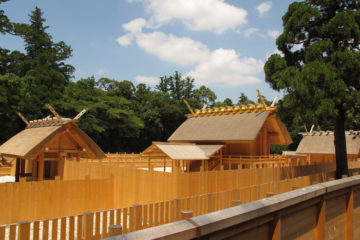
The Seto Inland Sea, surrounded by Japan’s three main islands of Honshu, Shikoku Kyushu, is Japan’s largest inland sea, and the region including the coastal areas is referred to as “Setouchi.” It is a region abundant with nature and profound scenery including a calm, lake-like sea dotted with many islands, beautiful stretches of sandy beaches with pine trees, and terraced rice fields, and it has received accolades for its beauty from travelers from the West such as Philipp Franz von Siebold and Thomas Cook from the end of Edo period (1603-1867) through the Meiji era (1868-1912). In 1934, this region which stretches over Okayama, Hiroshima, and Kagawa prefectures was designated as Japan’s first national park, the Setonaikai National Park.
The Seto Inland Sea also serves an important role as a maritime traffic route, and
from ancient times has been a crossroads for bringing people, goods, and information from the Asian continent which developed into culture and traditions that still exist to this day.
On the other hand, the rapid economic growth from the 1960’s onward lead to large-scale industrialization, and in exchange for economic development some serious environmental pollution occurred in a portion of this beautiful landscape. The Seto Inland Sea, including its negative side, is an area with an accumulation of history and culture.
In recent years Setouchi has added contemporary art as a new attraction, and it has started to become known worldwide. In particular, the island of Naoshima has constructed a subterranean art gallery as to not mar the natural landscape and with the concept of “symbiosis of nature, architecture and art” and establishments such as the Benesse House Museum which combine a hotel and art gallery. The island is known as “the holy land of contemporary art.” Unexpectedly encountering artwork placed throughout the Benesse House Museum and the subterranean art gallery designed by architect Tadao Ando is one way to enjoy the island. The island of Teshima has an art gallery surrounded by beautiful terraced rice fields, and you can get a sense of “living together with art.” On Ogijima Island there are private residences densely lined up a slope with narrow hill roads winding through them. “Seeing art on a little street” is what tourists can feel when visiting these islands.
This year is the exhibition year of the Setouchi Triennale, which is held once every three years. In addition to Naoshima, Teshima, and Ogijima introduced above, Shodo Island, Inujima, Megijima, Oshima, and others for a total of 12 islands are included with the event opening at Uno Harbor. The previous event in 2010 had a landmark increase of 300,000 visitors with a total of 940,000 attendees. This year the event is divided into three parts for spring, summer, and fall (total session of 108 days), and the summer season (7/20-9/1) and fall season (10/5-11/4) are coming up.
With contemporary art coexisting with the scenery of simple fishing villages, Setouchi has become a fresh and upcoming travel spot. The popularity of “Art Islands Afloat in the Seto Inland Sea” has been increasing year by year.





0件のコメント